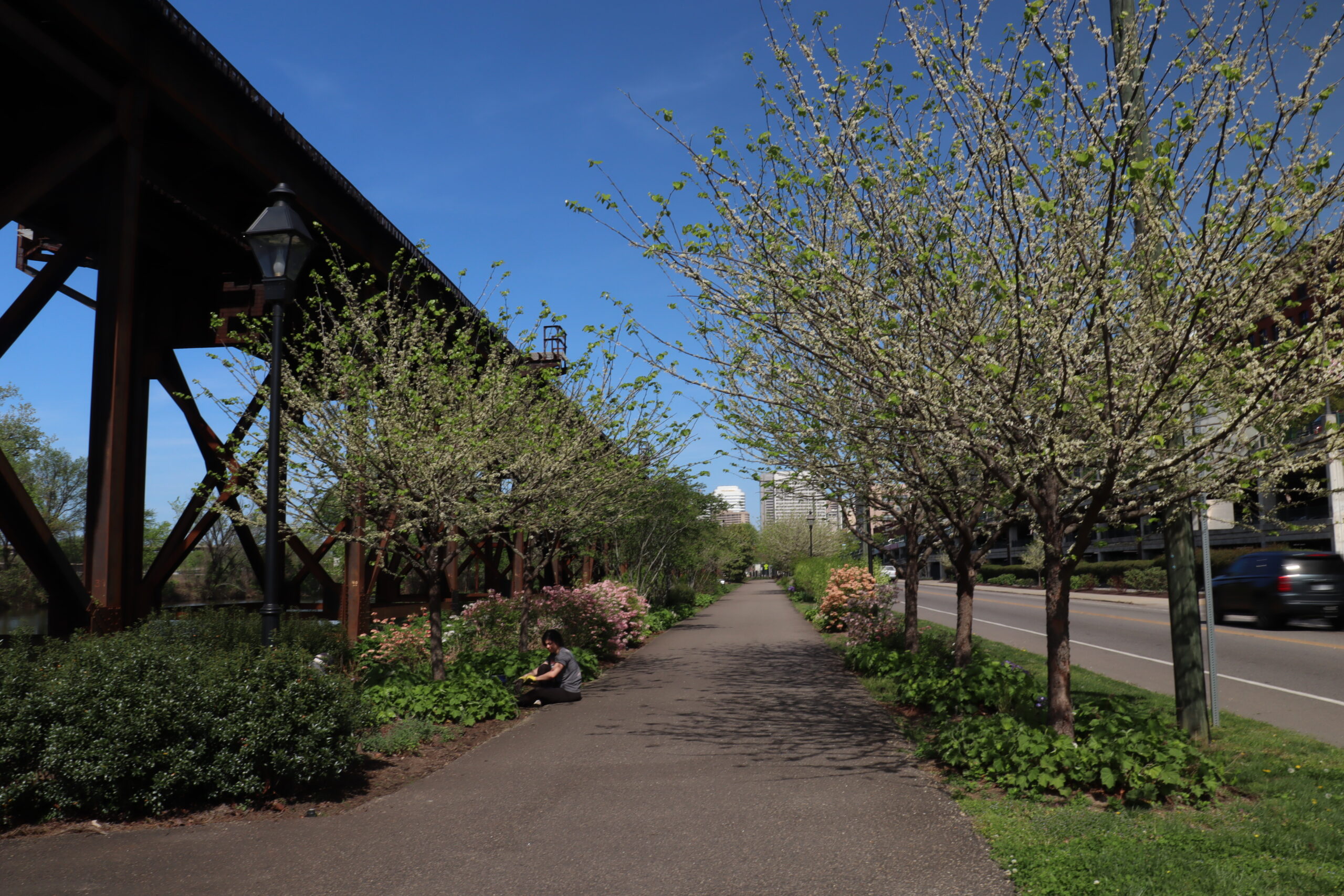Author: Katy Riley
Hello reader! My name is Katy, and I am currently a graduate student in Virginia Tech’s Executive Master of Natural Resources (XMNR) Program. The XMNR program focuses on leadership for sustainability, emphasizing the development of professionals who can effectively ‘lead from where they are’ to address the complex challenges of sustainable development and environmental security. Over the past several months, I have been interning with Capital Trees to gain a deeper understanding of urban greening efforts taking place in the City of Richmond. In my curriculum, and my work with Capital Trees, I have gained valuable insights into the power of harnessing ecosystem services to equitably mitigate the impacts of climate change, and the work being done here in Richmond.
Today, more than half of the world’s population lives in urban areas, with projections indicating that this figure will rise to close to 70% by 2050 (1). As urban populations rise, it will be important to ensure these areas are growing in ways that are safe and sustainable, prioritizing the interdependent areas of community and environmental health. Additionally, as our climate continues to change, cities worldwide will need to increase their adaptive capacity, or ability to adjust to new situations, in order to become more resilient against the impacts of climate change. In this context, becoming resilient refers to a community’s ability to recognize and plan for its specific climate-related risks and challenges, allowing it to better recover and even thrive despite ongoing stressors or disruptions.
Given increasing average temperatures, the City of Richmond will become more vulnerable to the climate risk of severe heat. Over the next 30 years, Richmond can anticipate an increasing number of hot days (days above 105°F) and more heat waves compared to today (2). This temperature increase will have negative consequences for human health, particularly among frontline communities. Frontline communities are those who will experience the most immediate and intense consequences of climate change. In Richmond, frontline communities have limited access to green space, which increases exposure to extreme heat and ultimately increases their risk of experiencing respiratory issues and heat-related illnesses.
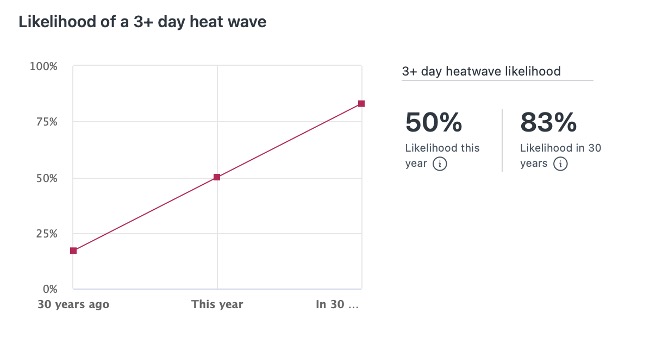
Hot Days Experienced in a Year
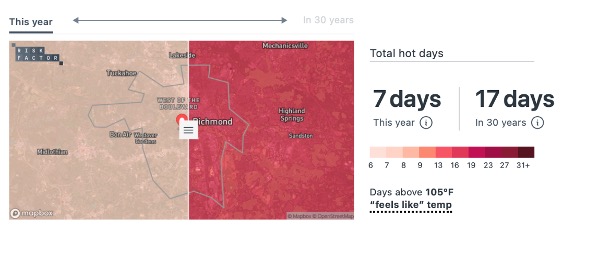
Images Courtesy of RiskFactor.com
Reducing Richmond’s vulnerability to extreme heat will require technological advancements and changes to the city’s engineered and built environment. That being said, the city can make meaningful changes today to harness ecosystem services that can significantly enhance Richmond’s resilience in the face of extreme heat. For example, expanding the city’s urban forest and increasing green infrastructure can help mitigate heat, while offering additional resilience-building benefits, including improved stormwater management.
Urban forests comprise a collection of trees in cities and suburban areas, including urban parks, street trees, gardens, greenways, and river corridors. They encompass trees in residential areas, those planted along city streets, and within public parks. Research indicates that, on average, urban forests have temperatures that are 2.9°F lower than nonforested urban areas (7). By planting trees and vegetation around buildings, in parking lots, and on streets, urban greening efforts can serve as an effective heat mitigation strategy, combating issues like the urban heat island effect. Trees and vegetation, such as bushes, shrubs, and tall grasses provide shade, reduce surface temperatures, and contribute to cooling through evapotranspiration. Evapotranspiration refers to the process in which water is transferred from the land to the atmosphere. It involves both evaporation from the soil and transpiration, which is the release of water vapor from plant leaves. The release of water vapor through transpiration has a cooling effect on the surrounding air. This cooling effect reduces the risk of heat related health issues, making the outdoors more accessible for activities like commuting, exercising, or relaxing.
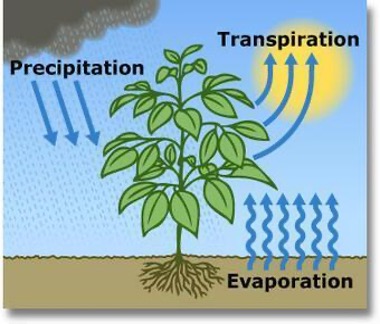
Image Courtesy of the United States Geological Survey
Trees and vegetation also play a significant role in stormwater management. Green infrastructure absorbs and filters rainwater, allowing water to pass through layers of soil, sand, rock, and other natural materials. Impervious surfaces like rooftops, paved roadways, and other surfaces where water cannot penetrate lead to reduced natural water filtration. This contributes to increased pollution in urban watersheds as stormwater runoff carries pathogens, nutrients, sediments, and heavy metals into our waterways. In cities with combined sewer systems, like Richmond, heavy rains and impermeable surfaces increase the risk of untreated sewage being discharged into the James River and Chesapeake Bay watershed. Green infrastructure can effectively reduce stormwater discharges, resulting in fewer combined sewer overflows and decreased pollution. Access to water of sufficient quality and quantity will play a pivotal role in ensuring resilience during periods of extreme heat. By reducing water pollution, green infrastructure can help protect vital community resources like the James River, making it a reliable source for drinking water, recreation, and cooling off during warmer months.
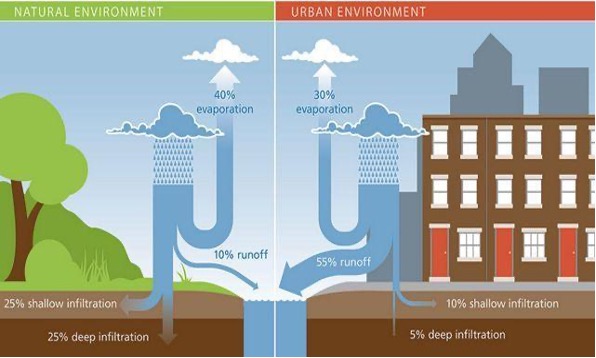
Image courtesy of the Nature Conservancy
In addition to providing shade, cooling, and effective stormwater management, green spaces are also great for your mental health! Research shows that people experience less mental distress and have healthier cortisol profiles when they live in urban areas with more green space when compared to those who live in areas with less (4). All of these factors contribute to an improved quality of life and increased personal resiliency among urban citizens.
Efforts to harness the power of ecosystem services through expanding the city’s urban forest and green infrastructure are currently taking place in Richmond and are being led by organizations like Capital Trees. Capital Trees is dedicated not only to building green spaces, but also ongoing sustainable management and community engagement. I believe that this approach is necessary to ensure the longevity of these areas as it prioritizes ongoing community involvement and commitment. Green spaces can be a source of community pride and connection to nature, while helping to improve the quality of our city’s vital natural resources and improve the quality of life for all Richmonders. By equitably increasing our urban green spaces, we can work to create a cooler, greener, and more resilient Richmond.
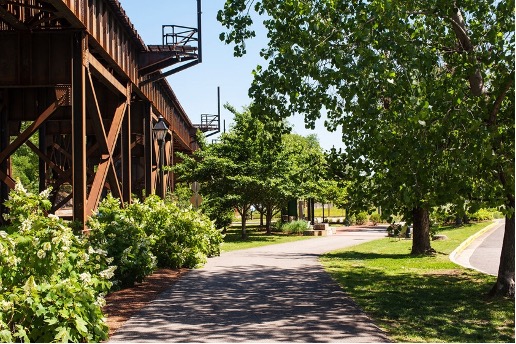
Image Courtesy of Waterstreet Studio
References:
- https://www.un.org/development/desa/en/news/population/2018-revision-of-world-urbanization-prospects.html
- https://riskfactor.com
- https://www.epa.gov/heatislands/using-trees-and-vegetation-reduce-heat-islands
- https://www.ncbi.nlm.nih.gov/pmc/articles/PMC5663018/
- https://www.nps.gov/articles/000/uerla-trees-air-pollution.htm?utm_source=article&utm_medium=website&utm_campaign=experience_more&utm_content=large
- https://www.usgs.gov/special-topics/water-science-school/science/evapotranspiration-and-water-cycle
- https://www.epa.gov/green-infrastructure/benefits-green-infrastructure
- https://www.nature.org/en-us/what-we-do/our-insights/perspectives/second-nature-stormwater-urban-green/
- https://resilientvirginia.org

